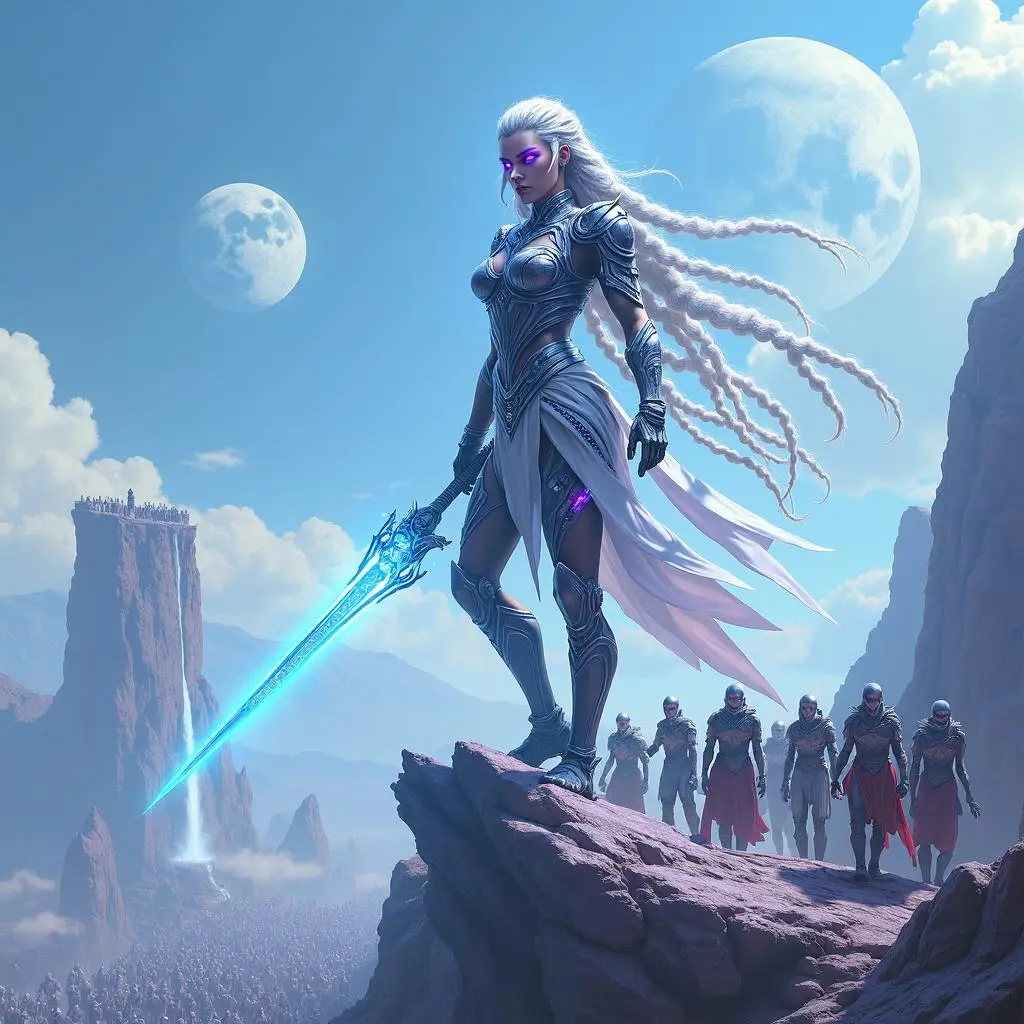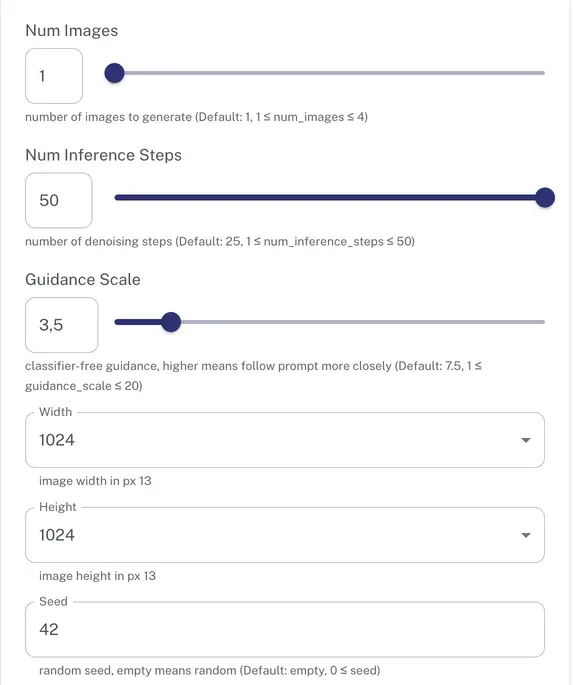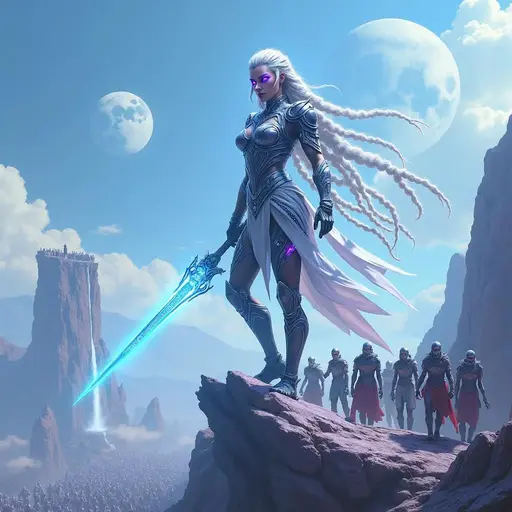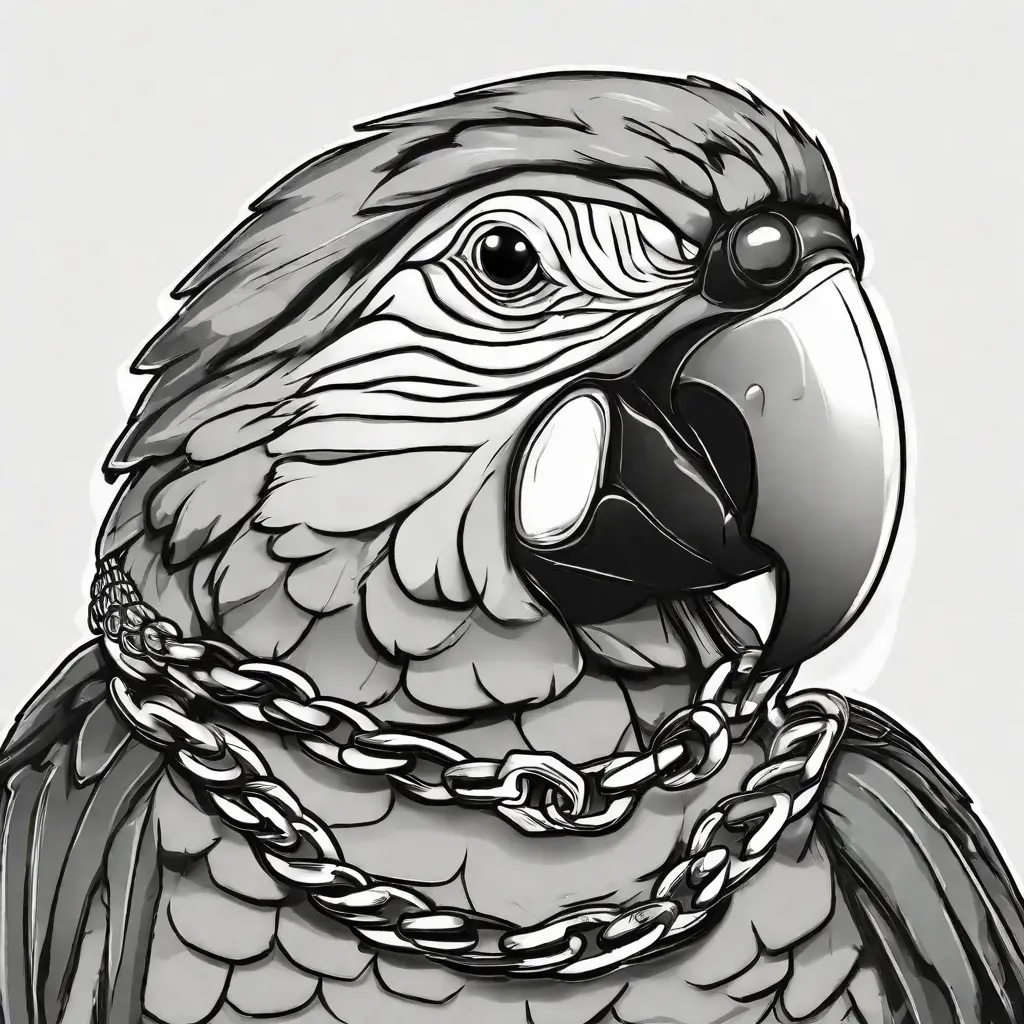FLUX.2 is live! High-fidelity image generation made simple.

Table of Contents
- Introduction
- The Art of Prompt Writing
- FLUX.1-dev Configuration
- Evolving Your Character
- Tips for Mastering FLUX.1-dev
- Conclusion
Introduction
FLUX.1-dev represents a new frontier in text-to-image generation, bringing an advanced level of precision and creativity to visual outputs. This AI model is especially suited for imaginative settings such as fantastical landscapes, intricate character designs, or dynamic scenes. The potential applications for FLUX.1-dev span a range of creative industries, from gaming and film production to advertising and artistic exploration.
For users who prioritize speed over quality, FLUX.1-schnell offers a faster, more streamlined workflow. However, for the purpose of this guide, we'll concentrate on FLUX.1-dev for maximum detail and quality.
As a case study, we will create a fierce female warrior within an otherworldly setting and showcase the best practices for prompt writing and model settings.
FLUX.1-dev Configuration

While a well-crafted prompt is essential, optimizing FLUX.1-dev’s settings is equally important to achieving high-quality results. Here's a breakdown of key configuration parameters:
- Seed Value: The seed value ensures consistency in generated images. A random, but fixed value can be reused to replicate specific outputs. In this guide, we use a seed value of 42.
- Image Dimensions: Set dimensions, such as 1024x1024 pixels, for balanced image quality and file size.
- Guidance Scale: A guidance scale of 3.5 strikes a balance between creativity and the adherence to prompt specificity.
- Inference Steps: Setting 50 inference steps ensures detailed images, with the model given enough iterations to fine-tune the visual output.
- Number of Images: Start with a single image generation (Num Images = 1) to iterate efficiently.
These settings allow FLUX.1-dev to maintain focus on your prompt’s specific elements while also delivering creative outputs.
The Art of Prompt Writing
Key Elements of an Effective Prompt
Creating eye-catching images with FLUX.1-dev hinges on your ability to write a precise and descriptive prompt. Here are some key elements to consider when crafting prompts:
- Specific Details: Include clear and vivid descriptions of characters, objects, and environments to ensure accurate rendering.
- Setting: Provide contextual information about the world or scene your character inhabits.
- Mood and Atmosphere: Describe the tone or emotion you wish to evoke through the imagery.
- Style: Specify the desired artistic style, whether it's hyper-realistic, surreal, or another format.
Example: Crafting a Warrior Character
Let’s break down a sample prompt to showcase these principles. Imagine you want to create a warrior character within a vibrant alien landscape:
"A battle-hardened female warrior standing atop a crystalline cliff in a fantastical alien world. She has long, braided silver hair and glowing purple eyes. Her armor is a mix of high-tech materials and organic, bioluminescent elements. In her right hand, she wields an energy sword emitting a blue glow. The background shows two moons in the sky and floating islands with waterfalls. The scene is rendered in a hyper-realistic style with vibrant colors."

Why This Works:
- Specific Details: The character’s physical traits, armor type, and weapon are vividly described.
- Setting: A cliff in an alien world with moons and floating islands sets a clear context.
- Mood and Atmosphere: The description of the glowing elements and vibrant colors conveys a sense of energy and life.
- Style: By specifying a hyper-realistic style, the prompt guides the model to produce a visually sharp and immersive image.
Evolving Your Character
Adding New Elements: The Dining Warrior
Once you’ve established a basic character, you can add depth by incorporating new elements into the scene. For instance, let’s evolve our warrior by introducing a dining scene.
"A battle-hardened female warrior standing atop a crystalline cliff in a fantastical alien world. She has long, braided silver hair and glowing purple eyes. Her armor is a mix of high-tech materials and organic, bioluminescent elements. In her right hand, she wields an energy sword emitting a blue glow. With her left hand, she's bringing a piece of ethereal, glowing fruit to her mouth, about to take a bite. The fruit hovers slightly above her palm, pulsating with inner light. The background shows two moons in the sky and floating islands with waterfalls. Nearby, a floating crystal table holds an array of otherworldly delicacies. The scene is rendered in a hyper-realistic style with vibrant colors."

Why This Works:
- The new action (eating glowing fruit) introduces a dynamic pose while maintaining consistency with the original scene.
- It adds an element of interactivity, enhancing the visual narrative without detracting from the primary character focus.
Changing Contexts: From Lone Warrior to War Leader
To further develop the warrior’s story, you might want to change her role from a solitary fighter to a leader of an army.
"A battle-hardened female warrior standing atop a crystalline cliff in a fantastical alien world. She has long, braided silver hair and glowing purple eyes. Her armor is a mix of high-tech materials and organic, bioluminescent elements. In her right hand, she wields an energy sword emitting a blue glow. The background shows two moons in the sky and floating islands with waterfalls. The scene is rendered in a hyper-realistic style with vibrant colors. She is leading a massive army of diverse alien warriors spread out below the cliff, ready for battle."

Why This Works:
- The prompt builds on the previous visual elements while introducing a new concept: leadership.
- It expands the scene, giving the warrior more significance and context, enriching the visual output.
Tips for Mastering FLUX.1-dev
To consistently create remarkable images with FLUX.1-dev, consider the following best practices:
- Be Precise with Core Elements: Always describe your main subject with specific, vivid details.
- Use Descriptive Adjectives: Adjectives like "crystalline," "bioluminescent," or "hyper-realistic" help refine the visual outcome.
- Leave Room for Interpretation: Occasionally, being too specific can stifle creativity. Allow some open-ended aspects for the AI to explore creatively. Phrases such as "in a fantastical alien world" allow for creative flexibility.
- Iterate on Your Prompts: Do not overchange your prompts. Change one element at a time to better understand how each affects the final image.
- Tweak guidance scale and seed value: When you are close to the desired output, experiment with different guidance scales and seed values to refine the image further.
By practicing and tweaking these strategies, you'll refine your prompt-writing skills and generate increasingly stunning visuals.
Conclusion
Mastering FLUX.1-dev is an art form that combines detailed prompt writing with optimal configuration settings. Whether you’re crafting the story of a fierce warrior or exploring new landscapes, following these best practices will lead to consistent and visually striking results. As you grow more comfortable with the model, experiment with different settings, characters, and environments to push the boundaries of what’s possible.
Ready to dive into FLUX.1-dev? Access it here: FLUX.1-dev on DeepInfra.
Join our creative community and share your AI-generated visuals on Discord.
 Langchain improvements: async and streamingStarting from langchain
v0.0.322 you
can make efficient async generation and streaming tokens with deepinfra.
Async generation
The deepinfra wrapper now supports native async calls, so you can expect more
performance (no more t...
Langchain improvements: async and streamingStarting from langchain
v0.0.322 you
can make efficient async generation and streaming tokens with deepinfra.
Async generation
The deepinfra wrapper now supports native async calls, so you can expect more
performance (no more t... Juggernaut FLUX is live on DeepInfra!Juggernaut FLUX is live on DeepInfra!
At DeepInfra, we care about one thing above all: making cutting-edge AI models accessible. Today, we're excited to release the most downloaded model to our platform.
Whether you're a visual artist, developer, or building an app that relies on high-fidelity ...
Juggernaut FLUX is live on DeepInfra!Juggernaut FLUX is live on DeepInfra!
At DeepInfra, we care about one thing above all: making cutting-edge AI models accessible. Today, we're excited to release the most downloaded model to our platform.
Whether you're a visual artist, developer, or building an app that relies on high-fidelity ...
© 2025 Deep Infra. All rights reserved.


